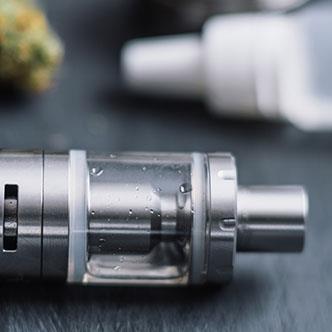
A recent study raises safety concerns about vaping and driving, based on research conducted at Johns Hopkins University that shows vaping marijuana has stronger effects on cognitive and motor skills than smoking it. Findings were published in JAMA Network Open and highlight the need for increased education and regulation of vaporized marijuana.
Conducted between 2016 and 2017 at the Johns Hopkins University School of Medicine, this study compared the immediate effects of smoked and vaporized cannabis use in a controlled environment. It included 17 healthy young adults, with an average age of 27 who were not regular marijuana users.
The goal was to see whether vaporizing marijuana affects the high that users experience when compared to smoking a cigarette or “joint.”
Vaporizing, often referred to as “vaping,” works by heating dried or concentrated extracts (in this case, of marijuana) to create a vapor that can be inhaled. Vaping has become extremely popular, as the process itself produces fewer toxins compared to traditional smoking methods. However, vaping remains poorly regulated and its potential health effects are not well understood.
In the recent study, participants were closely monitored while smoking and vaporizing marijuana on six separate occasions. During these visits, they smoked and vaped 0 mg, 10 mg and 25 mg of THC (Δ9-tetrahydrocannabinol), which is the chemical primarily responsible for the psychological effects of marijuana. Participants were then monitored for roughly 8.5 hours, during which time they completed various tasks to test their cognitive and motor functions.
Overall, researchers found that smoking and vaping 10 mg of THC had minor drug effects on participants, causing symptoms like relaxation, alertness, hunger and anxiety. It also had a modest impairment on cognitive functioning, which was measured by computer tests that assess factors like attention and reaction times.
Smoking and vaping 25 mg of THC, however, had far more noticeable effects. The higher dose was associated with more pronounced drug effects and what researchers call significant impairment of cognitive and motor functions. It also increased risk of adverse effects like vomiting and hallucinations.
With both doses, smoking and vaping temporarily increased THC levels in the blood as well as heart rate.
The biggest takeaway from the study, however, was the difference between smoking and vaping. When receiving the same dose of THC, participants reported more significant drug effects when vaping vs. smoking. Vaping also resulted in higher THC levels in the blood compared to smoking.
What does this mean for consumers? Now that marijuana regulation has become much less strict over the years, there’s increased access through smoke shops across the country. The concern, according to experts, is that THC levels tested in this study are generally lower than what consumers might buy from a smoke shop. And for those vaping marijuana, the effects can be even more pronounced than when smoking.
As a result, experts encourage better education about the strong effects that smoking and vaping marijuana can have on functioning. Even though marijuana use may be legal in most states, that doesn’t mean it’s safe to drive a car or engage in other tasks after smoking. In fact, this study shows that even at the lowest doses, smoking and vaping marijuana has immediate effects on cognitive and motor functions.
Authors note that this study included infrequent marijuana users who on average, hadn’t smoked in the past year. As a next step, they encourage future research to compare the effects of vaping and smoking in habitual marijuana users.